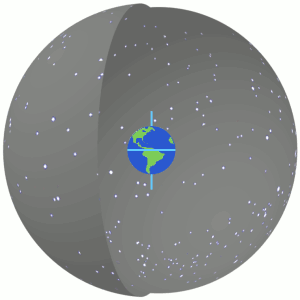Declination
The declination angle is measured north (positive) or south (negative) of the celestial equator, along the hour circle passing through the point in question.
Declinations with magnitudes greater than 90° do not occur, because the poles are the northernmost and southernmost points of the celestial sphere.
The Earth's axis rotates slowly westward about the poles of the ecliptic, completing one circuit in about 26,000 years.
The declinations of Solar System objects change very rapidly compared to those of stars, due to orbital motion and close proximity.
An extreme example is the pole star which has a declination near to +90°, so is circumpolar as seen from anywhere in the Northern Hemisphere except very close to the equator.
Conversely, there are other stars that never rise above the horizon, as seen from any given point on the Earth's surface (except extremely close to the equator.
Neglecting atmospheric refraction, for an observer at the equator, declination is always 0° at east and west points of the horizon.
Likewise, near the local winter solstice, the Sun remains below the horizon all day, which is called polar night.
[8] The second complication is that, assuming no deflection of the vertical, "overhead" means perpendicular to the ellipsoid at observer's location, but the perpendicular line does not pass through the center of the Earth; almanacs provide declinations measured at the center of the Earth.


